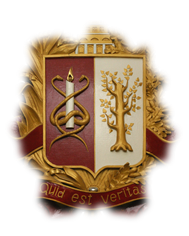Issue: 2022, Vol. 27, No. 4
THE ANALYSIS OF RISK FACTORS IN FEMALE ADOLESCENTS WITH TENSION HEADACHE DEPENDING ON PSYCHOSOMATIC CONSTITUTION TYPE
- Keywords
- rehabilitation, girls, adolescents, constitution, tension headache
- Abstarct
- Objective – to reveal the peculiarities of several factors (course of ante- and intranatal period, neurological status in the first year of life, social anamnesis) in female adolescents with tension headache (TH) depending on their psychosomatic constitution type. Material and methods. The study was performed in multidisciplinary hospital of the Ivanovo State Medical Academy. 100 girls with TH were selected among them 55 introverts and 28 extraverts. Characteristic features of headache, neurological status of the adolescents in the first year of life, obstetric and gynecological anamnesis of their mothers and social factors were estimated. Results and discussion. 40 % patients made complaints about cephalgia among 500 girls aged 15-17 years. TH appeared earlier in high-school girls of introvert type, than in extraverts (at the age of 13,5 ± 1,6 and 15,7 ± 0,5 years accordingly, р < 0,05), it was more frequent and more manifested – on average 6,9 ± 1,7 points, (in extraverts – 4,1 ± 1,6 points, р < 0,05), it was provoked by physical tension (in extraverts – by emotional tension). Mothers of introverts more frequently had disorders in the course of the present pregnancy. Introverts group more frequently demonstrated vegetative-visceral disorders – 70,6 % (against 40,1% cases in extraverts group, р < 0,05) and motor disorders – 70,6 % (against 10,7% cases in extraverts group, р < 0,05); hypertensive-hydrocephalus syndrome (96,4 against 74,5 % in introverts group). Introverts four times more often than extraverts had unfavorable adaptation course in school, had additional cognitive loads and very seldom attended sport sections (5,5 against 46,4 % in extraverts group, р < 0,05). Conclusion. It is advisable to take into account the type of psychosomatic constitution of patients in order to improve the results of their treatment when forming the program of medical and social support of adolescents.


 Vestnik_4_2022-39-44
Vestnik_4_2022-39-44